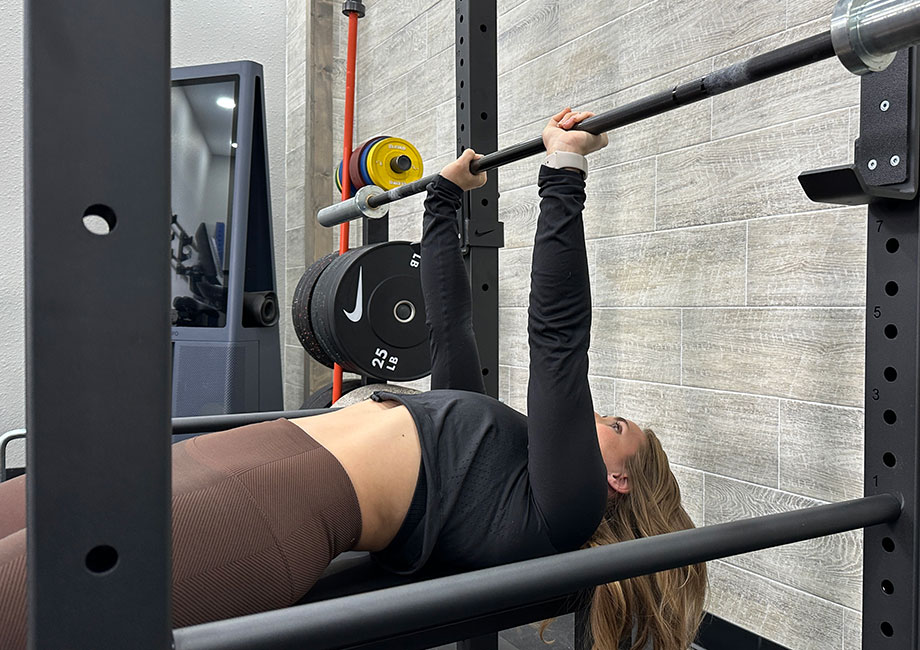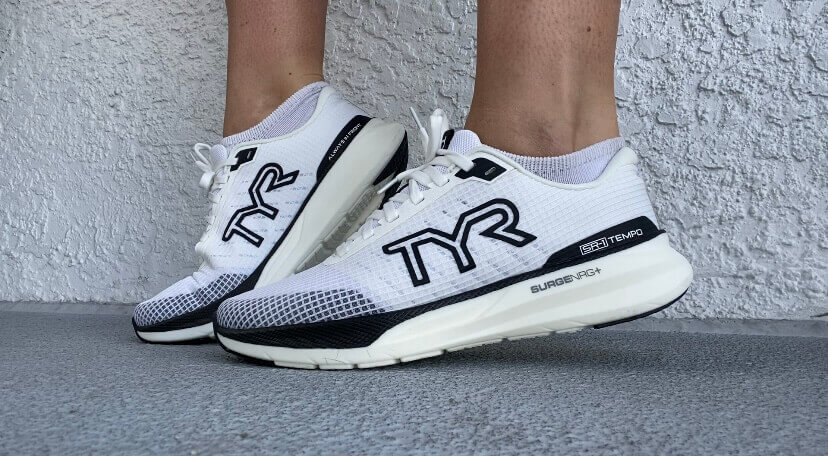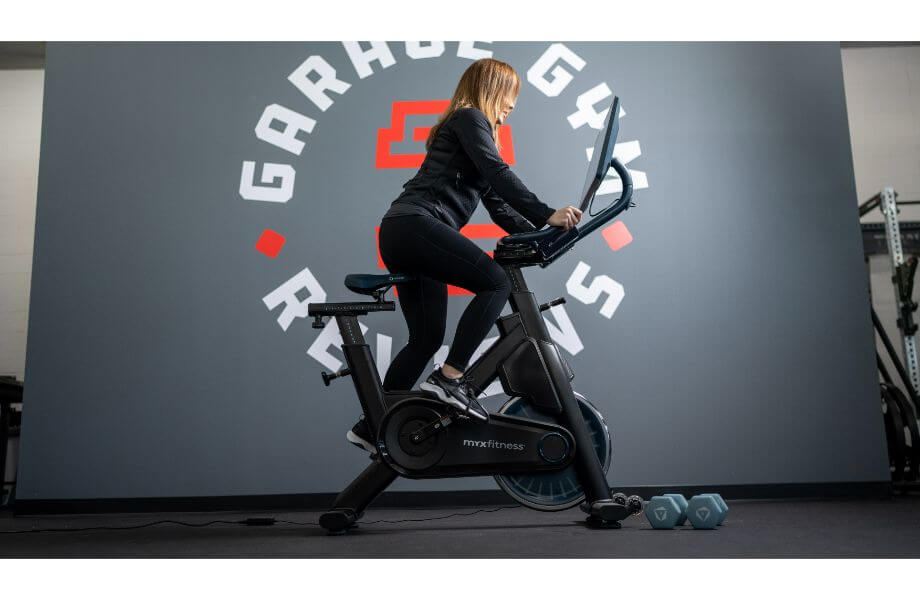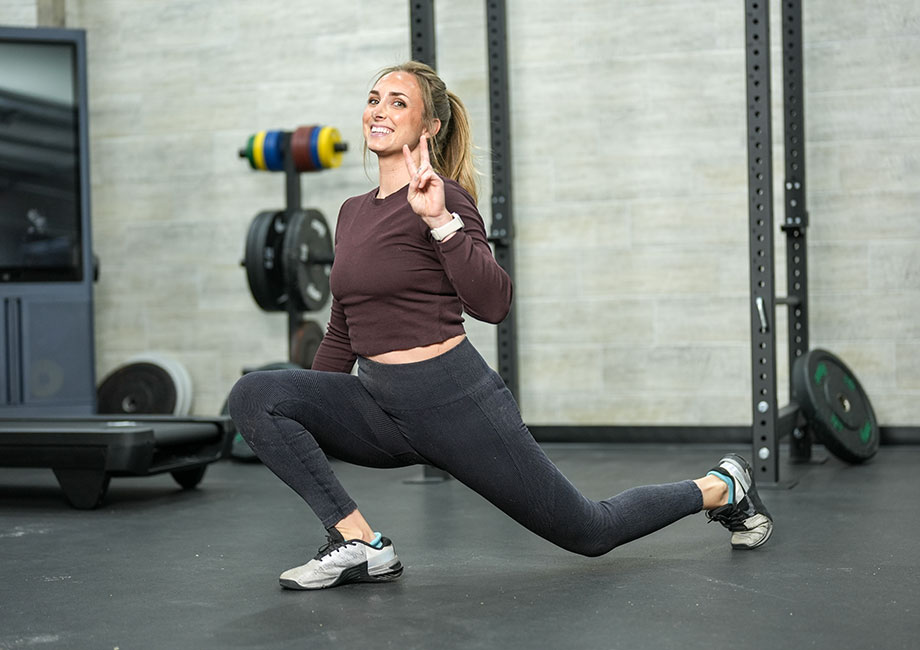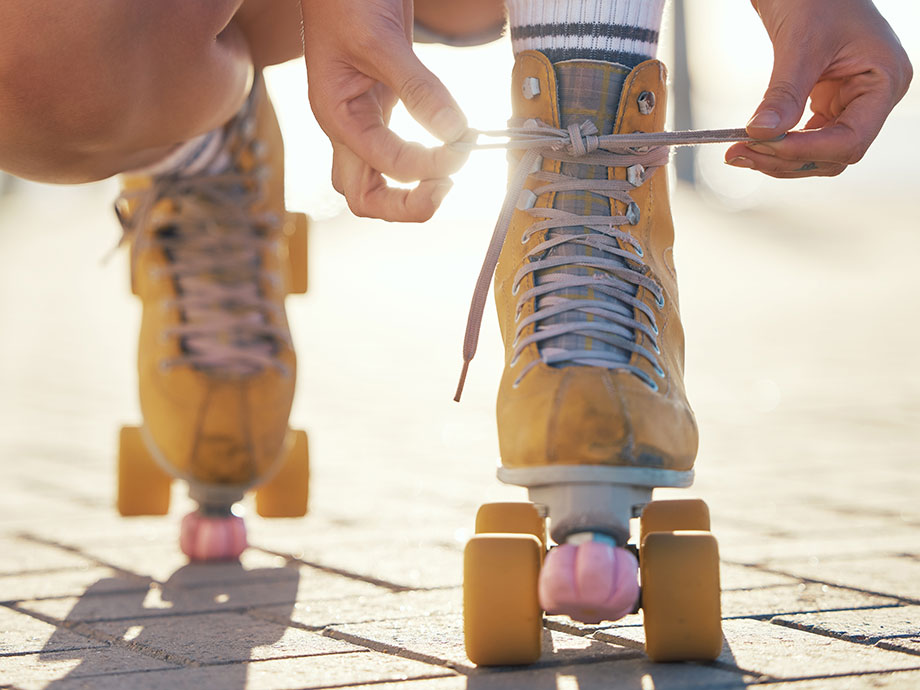If you’ve been training for a while, you’ve probably done the traditional bench press for the pectoral muscles. But what about the close-grip bench press? Although not as common amongst bodybuilders but just as effective, the close-grip version places more emphasis on the triceps rather than the chest (although it still activates the chest and delts to some extent).
RELATED: What Muscles Does the Bench Press Work?
As a certified personal trainer (CPT) with 10 years of experience in weightlifting, I understand the importance of doing barbell exercises such as the close-grip bench press properly. Today, I’ll go through my top tips on performing this exercise with good form, the benefits of doing the close-grip bench press in the first place, and four variations for you to add to your next chest and triceps workout.
How To Do The Close-Grip Bench Press Exercise
Muscles worked: Triceps, pecs, anterior deltoid
- On a regular weight bench, load the barbell with the desired weight.
- Lie back on the bench, with your feet flat on the floor and the bar parallel to your eyes.
- Grab the bar firmly with your hands slightly narrower than shoulder-width apart.
- Brace your core, then lift the bar off the rack so it’s in a locked position with your arms extended.
- Bring the barbell down to your chest in a controller manner.
- Pause, then push the bar to the top position.
- Keep pressing for repetitions, re-racking the bar when you’re finished.
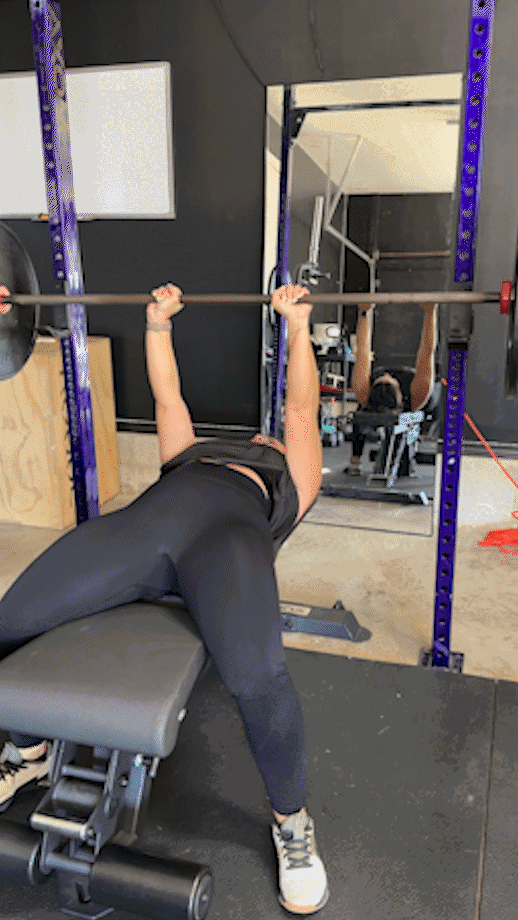
Trainer Tips for Form
With any exercise, proper form is the key to the greatest results without injury risk, and the close-grip bench press is no different. Here are a few tips on how to make the most out of the exercise:
Place Your Feet Flat on the Floor
Having your feet flat against the floor during the close-grip bench press helps with stability. This is because your butt is less likely to lift off the bench if your heels are on the ground. Second, when you return the bar to the top position, leg drive is crucial to safely move more weight vertically. With your feet flat, leg drive is easier to achieve.
RELATED: How to Lift Heavier
Get Underneath the Bar
You’ll want your eyes to be in line with the bar because it’ll make it easier to rack and unrack. If you’re too far forward on the bench, this can cause unnecessary discomfort in the shoulder joints when you’re unracking the barbell. If you’re too far back, you may hit the rack when lowering the bar or pushing it back up.
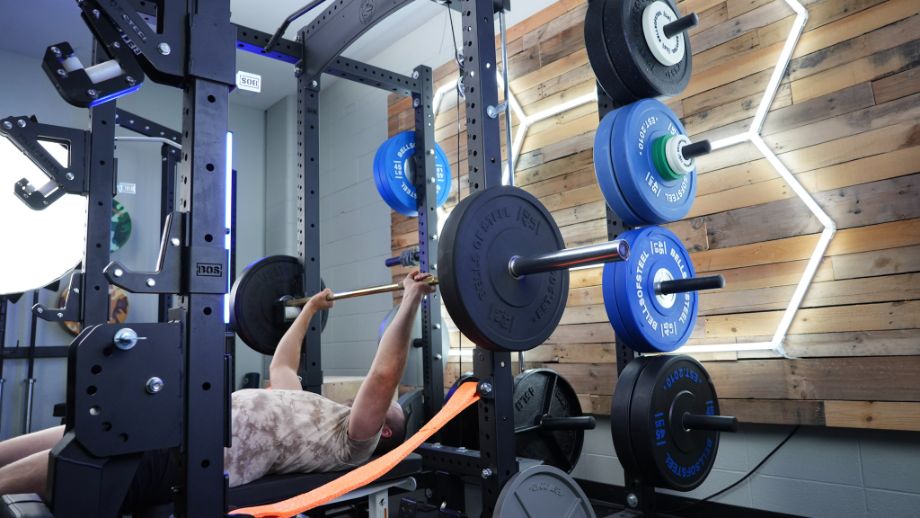
Use the Correct Grip Width
Although it’s called a close-grip bench press, you don’t want your hands to be too close together (yes, there is such a thing!). If this happens, it’ll feel uncomfortable and become more difficult to move weight. Of course, you don’t want a wide grip like you would with a regular bench press, either. Experiment with a few different hand positions with this triceps exercise.
Squeeze Your Shoulder Blades
When you squeeze your shoulder blades together, your chest is higher, giving you a shorter range of motion (ROM) during the movement. This makes it easier to perform the lift correctly. You’re also more stable when you retract your shoulder blades because your shoulders are less likely to move—trust me, you don’t want this to happen!
RELATED: Get Pumped With This Chest, Shoulder, And Triceps Workout
Close-Grip Bench Press Benefits
You’re probably wondering, “What are the benefits of doing the close-grip bench press?” Below are three that I feel are the most important when teaching this exercise:
Hypertrophy For the Triceps
First things first. With the bench press, the closer the grip, the more the movement will isolate the triceps1. Although the traditional bench press also activates the triceps, the close-grip variation targets them more. And if you want bigger arms—who doesn’t?—this is an ideal exercise to add to any workout routine.
RELATED: How to Gain Arm Mass
Helps Other Compound Lifts
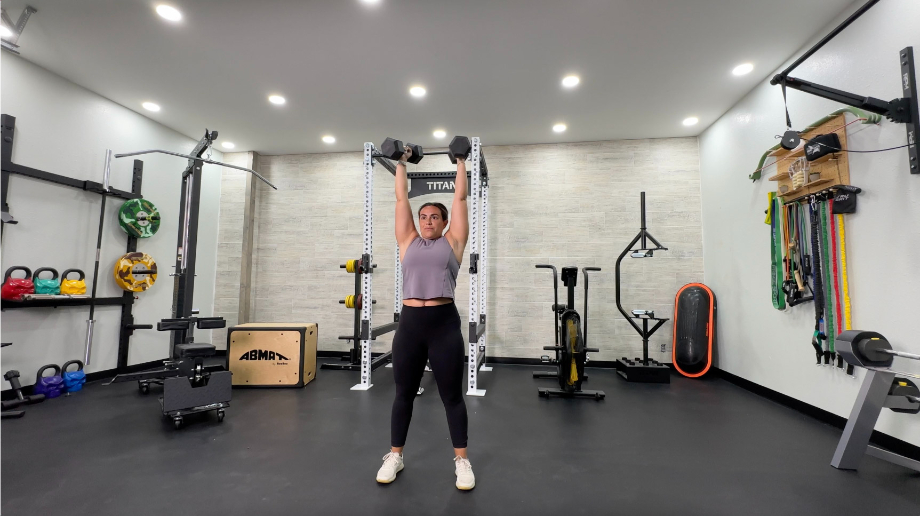
Having strong triceps may help with other compound lifts, such as the barbell bench press, dumbbell bench press, overhead press, dumbbell shoulder press, and more. With all of these, the lockout is all about the triceps. If you’re not aware of what the lockout is, it’s the top position where your elbows become fully extended.
More Shoulder-Friendly
If you find the regular bench press painful on the shoulder joints, you might want to switch to the close-grip bench press and see if it makes any difference. It should. Yes, you may have to decrease the weight you lift, but for me, this is worth it for a more comfortable gym session.
Common Close-Grip Bench Press Mistakes
Don’t make the same mistakes I did when I started doing the close-grip bench press. These are two of the most common mistakes to avoid based on my experience:
Positioning the Bar Too High
During a regular bench press, you lower the bar to your middle or upper chest. However, with the close-grip variation, you’ll want to position the barbell slightly lower than this. Even though the two exercises look similar, they’re different in that the elbows start in slightly different positions. The lower bar position on the close-grip bench press accounts for this.
Tucking Your Elbows Too Much
I’m all for tucking in your elbows to avoid injuries with the barbell bench press. But the narrow grip on this exercise naturally tucks your elbows in, so in most cases, you don’t need to tuck them any further than this. Don’t overthink it. Usually, some flare is a good thing, as long as it’s not too much!
Close-Grip Bench Press Variations
There are multiple reasons you may want variations of the close-grip bench press. You might not have the right equipment or any at all (if this is you, we have a bodyweight alternative included). Also, the barbell close-grip bench press may be uncomfortable, especially if you’ve had a shoulder injury.
Alternatively, you may prefer to use a cable machine for your strength training. No worries! Below are four variations for your workout routine:
Close-Grip Incline Bench Press
Why do it: Compared to the standard-grip incline bench press, the closer-grip version places more emphasis on the triceps and less on the chest. Some people prefer the incline bench over the standard bench press because it puts less stress on the rotator cuffs.
How to do it:
- Add the necessary weight plates to the bar. Then, lie back on an incline weight bench with your eyes underneath the bar and feet flat on the floor.
- With a narrow grip, take hold of the bar. While ensuring your core is engaged, unrack the barbell.
- Slowly bring the bar to your upper chest. Hold it here for a moment.
- Using your triceps muscles, return the bar to the starting position.
- Continue for the desired number of reps.
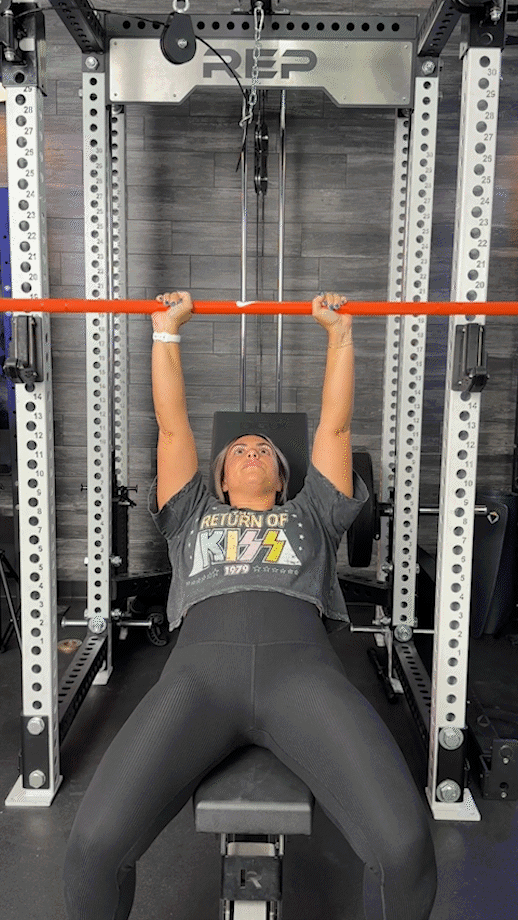
Close-Grip Dumbbell Bench Press
Why do it: For me, any strength training program should involve both barbells and dumbbells, which is why I recommend this exercise. If you don’t have a spotter, the close-grip dumbbell press is safer than the barbell version, and because it’s a unilateral exercise, it may help to fix muscular imbalances.
How to do it:
- Sit down on a flat bench, placing a pair of dumbbells on your quads. You’ll want to hold these with a neutral grip (palms facing each other).
- Lie backward, using the momentum to position the dumbbells over your chest muscles. The dumbbells should be touching each other and your arms should be straight.
- Tense your core, then bring the dumbbells to your chest, keeping your elbows tucked in.
- Pause, then use your tricep strength to push the dumbbells to their original position.
- Repeat for repetitions.
RELATED: Benefits of Strength Training
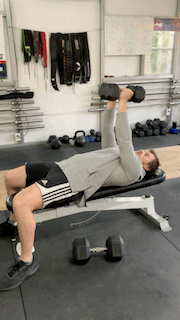
Close-Grip Cable Press
Why do it: Cable machines are ideal for beginners or for those who have had injuries. This is because they’re friendlier on the shoulder joints compared to using dumbbells or barbells, and you can easily change the positioning of the pulleys to target the chest in a slightly different way.
How to do it:
- Position both sides of a cable machine to between chest and shoulder height.
- Attach handles and select the correct weight (the same weight on each side).
- Facing away from the cable machine, grab the handles. You’ll want to position your hands inside of your shoulders.
- To create tension, take a couple of steps forward and get into a staggered stance, with one foot in front of the other.
- Keeping your head neutral and chest up, press through by straightening your arms in front of you.
- Hold, then return the handles to the original position.
- Press for reps.
RELATED: Best Cable Machine for Home Gym
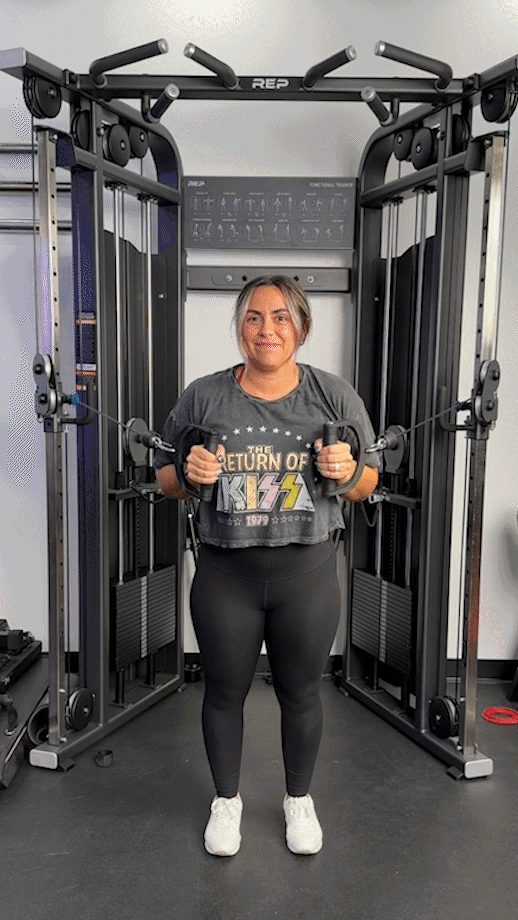
Close-Grip Push-Up
Why do it: Considered one of the most popular bodyweight exercises, close-grip push-ups work similar muscle groups to the close-grip bench press but don’t require any equipment. You can do them on your knees if the regular version is too difficult or do close-grip decline push-ups for a more advanced version.
How to do it:
- Start in a push-up position (also called the high plank position) but with one exception. Instead of your hands being shoulder-width apart, you’ll want them to be closer together.
- Squeeze your glutes, tense your core, and then begin the movement by lowering your body towards the floor.
- As you lower your body, tuck in your elbows to stop them from flaring outwards. Once your chest is as close to the ground as possible, stop.
- Reverse the motion by straightening your arms.
- Keep pushing for reps.
RELATED: What Muscles Do Push-Ups Work?
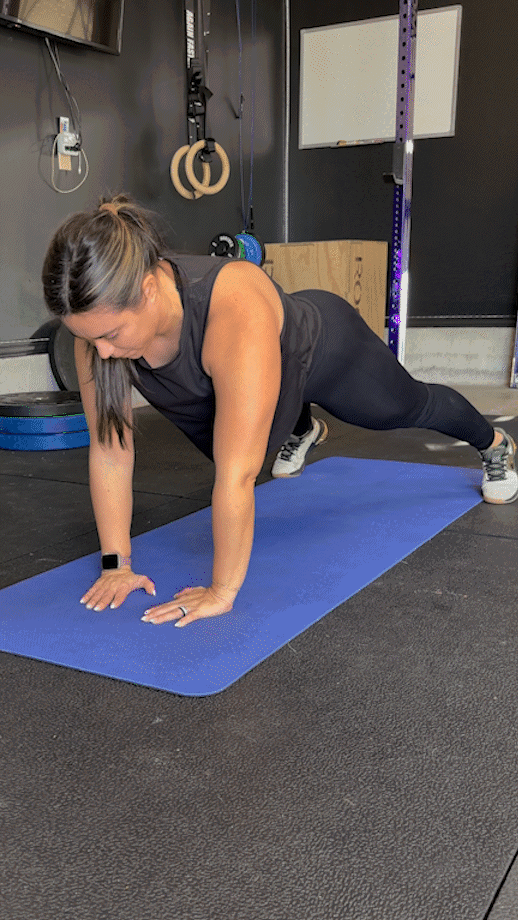
Useful Close-Grip Bench Press Equipment Accessories
To make the close-grip bench press more comfortable and to help increase the load you lift, here are a few equipment accessories to consider:
A Quality Bench
If you’re doing the close-grip bench press, having the best weight bench can make all the difference. You want one that’s comfortable but not to the extent that it feels like you’re sinking into it. You’re exercising, not napping! Stability and durability are important, too, and if you want to do other exercises with it, opt for an adjustable version.
Wrist Wraps
If you find yourself dealing with wrist pain during the close-grip bench press, there are two things you can try. First, you can assess your form to see if there’s anything you can adjust to help alleviate some of that pain. Second, you can try wrist wraps to see if they make a difference, especially if you’re lifting heavy weights or doing high-volume training.
If neither of these work, consider trying some of my close-grip bench press variations suggested above.
Weightlifting Shoes
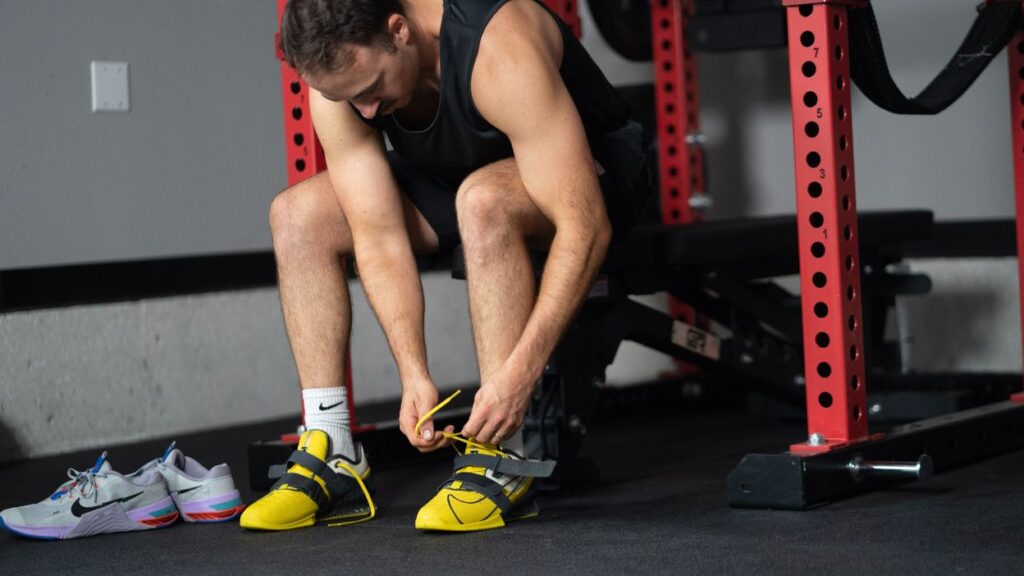
Previously, I mentioned the importance of having flat feet during the close-grip bench press. I’ll take it a step further and suggest using the best weightlifting shoes. Having a pair of shoes with a barefoot feel during the close-grip bench press can help you feel closer to the ground, giving you that extra leg drive you’re striving for.
Close-Grip Bench Press: Final Thoughts
The close-grip bench press is an excellent triceps exercise for building your “horseshoes” and assisting with your compound lifts as long as you maintain excellent form to get the most out of this dynamic movement.
Try adding this exercise to your next chest and triceps day; you can thank me later. Happy lifting!
Close-Grip Bench Press: FAQs
What does a close-grip bench press work?
A close-grip bench press mainly works the triceps, with some activation of the chest and shoulders. It’s slightly different from the standard bench press, which focuses more on the chest and less on the triceps. With the close-grip bench press, as is the case with most compound exercises, you work the core muscles, too.
Is it better to do a close-grip bench press?
Whether it’s better or not to do a close-grip bench press depends on your goals. A study on the effects of grip width on the bench press2 showed that your six-repetition maximum and tricep, bicep, and deltoid activity vary with narrow, medium, and wide grips. If your goal is to work the triceps, then yes, it’s probably better to do a close-grip bench press.
Does close-grip bench build mass?
Building mass in the upper body is definitely possible with the close-grip bench. If this is your goal, you’ll need progressive overload to make this happen. If you’re unaware of what this is, it means gradually increasing a stimulus in your training, which in most cases will either be the weight you lift or the number of reps you do.
RELATED: Best Supplements for Muscle Growth
Is close-grip bench bad for shoulders?
From my experience as a lifter and personal trainer, the close-grip bench is friendlier on the shoulders compared to the regular bench press. This is because your elbows are tucked in, giving less of a stretch on the shoulders.
Everyone is different, and you may find it painful to do the close-grip bench. If this is the case, try the close-grip dumbbell press or close-grip cable press instead.
References
- Tiwana MS, Sinkler MA, Bordoni B. Anatomy, Shoulder and Upper Limb, Triceps Muscle. [Updated 2022 Aug 30]. In: StatPearls [Internet]. Treasure Island (FL): StatPearls Publishing; 2023 Jan-. Available from: https://www.ncbi.nlm.nih.gov/books/NBK536996/
- Saeterbakken AH, Stien N, Pedersen H, Solstad TEJ, Cumming KT, Andersen V. The Effect of Grip Width on Muscle Strength and Electromyographic Activity in Bench Press among Novice- and Resistance-Trained Men. Int J Environ Res Public Health. 2021 Jun 14;18(12):6444. doi: 10.3390/ijerph18126444. PMID: 34198674; PMCID: PMC8296276.


